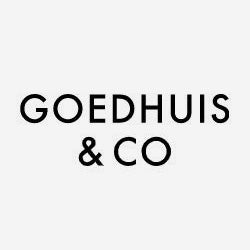
Post Parker
As is customary the third quarter was a quieter affair, holidays and high days slowing the market to a rather pedestrian pace. Sentiment towards Bordeaux remained cautious and whilst prices, for the most part, remained static there were small pockets of activity. Post Parker the 2005s jostled for attention as buyers assimilated his retrospective review and tempered their interest accordingly. Although Robert Parker was not as enthusiastic and generous with his scores as some had hoped, there remains strong support for the vintage and any doubters found plenty of acolytes willing to pick up stock. Equally the 2009 and 2010 vintages drew buyers’ attention, encouraged by the continuing opportunity to buy wines at a significant discount to their respective release prices. With Parker’s enthusiasm for these latter two vintages unequivocal, it is no surprise that interest remains.

This rather divergent thinking was borne out in the Liv-ex 100 index. June saw the index close at 244, the first increase since November 2013, but this was followed by a decline in July (241), a small recovery in August (242), which was consolidated in September (242). Undoubtedly there is uncertainty in the market but one should not be too hasty to dismiss the relative stability of the first half of the year as yet another plateau on the way down. Year to date and year on year the Liv-ex 100 is up (1.32% and 2.3% respectively). This positivity extends to all the major Liv-ex indices over the same period; it is only the five year view that makes grim viewing, encompassing as it does the highs of the market in early 2011.
 It is perhaps understandable that buyers are lacking mojo, recent years have offered little succour but, as mentioned previously, the gentler fluctuations in price of late suggest that, just maybe, the worst is behind us. A continued period of calm would be most welcome: slack water coming before the tides turns.
It is perhaps understandable that buyers are lacking mojo, recent years have offered little succour but, as mentioned previously, the gentler fluctuations in price of late suggest that, just maybe, the worst is behind us. A continued period of calm would be most welcome: slack water coming before the tides turns.
Beyond the Gironde
It is a familiar refrain but the Burgundy market remains in rude health. Long term aficionados might lament current prices but with demand for top Domaines still high, there is seemingly little sign of change. However, one should be mindful that interest is focussed on a number of Domaines and vintages, a far cry from the broad brush approach that elevated Bordeaux prices to such lofty heights. How much longer will this balloon keep rising is a good question but it is worth noting that the Liv-ex Burgundy 150 index is up 41% over a five year period; this is the greatest increase of any current Liv-ex index. Closer inspection reveals a 2% increase year on year, half a percent increase year to date but a small (0.2%) reverse month on month. Symptomatic of a quieter August perhaps but a noteworthy detail nonetheless; it is possible that a little grand cru fatigue is pervading buyers’ minds.
Elsewhere Tuscany continues to attract interest, a succession of good to great vintages over the last decade combined with realistic pricing proving a heady mix. Sassicaia and Ornellaia in particular have proved irresistible to the canny buyer. Taking the 2010 releases as a proxy, both wines were released around the £1000 per case mark, compared this to their Cabernet Sauvignon counterparts in Bordeaux where one finds oneself in second wine territory, it is easy to see the appeal. Going back further to the 2006 (a qualitative equivalent), you would expect to pay around £1650 per case for the Sassicaia and £1500 for the Ornellaia, Super Tuscans indeed. With the 2012 Sassicaia available at £545 per six and the 2012 Ornellaia at £540 per six, there are alternatives to Bordeaux to consider.
Champagne has seen a number of releases from the Grande Marques: 2006 Dom Perignon, 2006 Comtes de Champagne, 2004 Sir Winston Churchill to name a few. One might imagine such a glut of releases could stymie interest; not at all. Notwithstanding the difference in styles, there is good reason to pick up case or two: consumption (conspicuous or not) is immediate; compare this to Bordeaux for example, where significant stock depletion might not occur until after a wine’s first decade in bottle, and the proposition becomes more compelling. Interest should be shaded by the knowledge of production levels (notoriously difficult to ascertain accurately) but even so, at £455 per six 2006 Dom Pérignon merits serious consideration.
With three months remaining in the year, there may not be reason to cheer in all quarters but one should not be too downbeat, a period of consolidation would be a tonic for the market’s travails.

 Written By
Written By